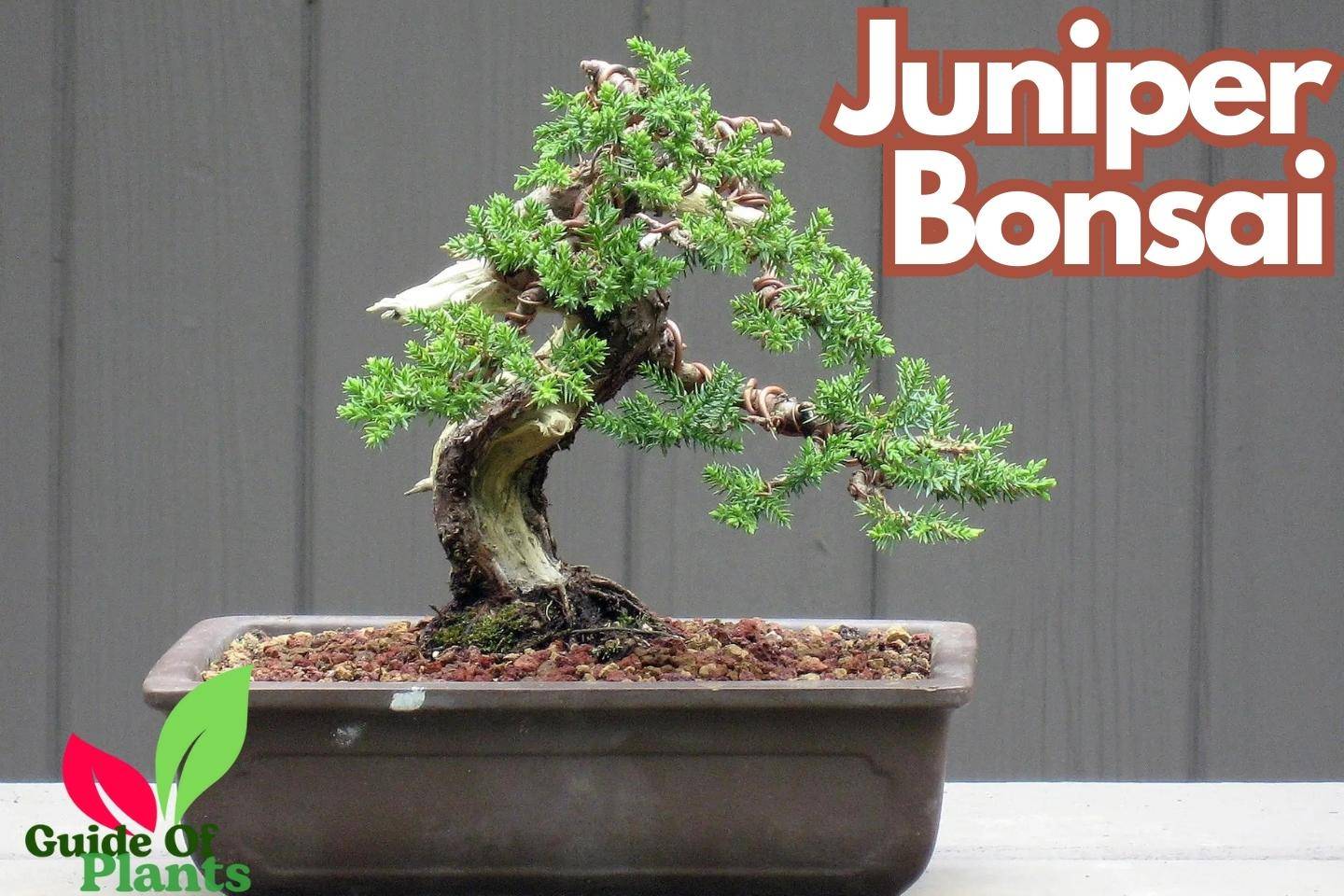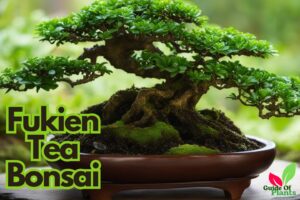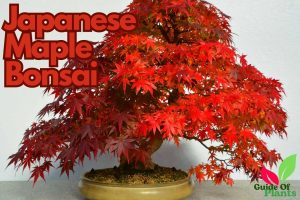Juniper Bonsai is a captivating art form that combines horticulture, aesthetics, and patience. This small tree comes from old China and Japan. But it has won the hearts of bonsai lovers all over the world. In this blog, we will delve into the fascinating world of Juniper Bonsai, exploring its history, characteristics, care techniques, advanced methods, and the art of displaying these living masterpieces. This guide will help you grow and enjoy Juniper Bonsai as well as bonsai gardening. No matter whether you’re a beginner or a bonsai expert.
Table of Contents
The History of Juniper Bonsai
Juniper Bonsai has a history of thousands of years in China and Japan. Bonsai is the art of growing miniature trees in trays. The exact origins of this bonsai are unknown, but historical records provide insights into its early development. Bonsai originated in China during the Tang Dynasty (618-907 AD). Juniper trees were often used, as they are hardy and can withstand various climates. Bonsai were admired for their aesthetic appeal and displayed in gardens and courtyards.

Bonsai spread to Japan from China in the 6th century. The Japanese developed their own unique tradition, influenced by Zen Buddhism. Juniper Bonsai played a significant role, and Shimpaku Junipers became prestigious symbols of beauty. This bonsai has evolved over centuries through the refinement of techniques and knowledge passed down by masters. It is a popular choice for bonsai enthusiasts due to its resilience, graceful foliage, and ability to develop intricate deadwood features. The art is celebrated and preserved through exhibitions, competitions, and the dedicated efforts of enthusiasts.
Know About: Ficus Bonsai
Types of Juniper Bonsai
Here are 3 major types of Juniper Bonsai which are practiced around the world:
Shimpaku Juniper Bonsai

The Shimpaku Juniper is a highly regarded bonsai species for its delicate foliage, compact growth, and adaptability. It has small, scale-like needles in vibrant green to bluish hues. Shimpaku Junipers often have dense foliage pads and graceful branches. Here are some varieties of Shimpaku Bonsai:
- Itoigawa Shimpaku: This variety is highly prized for its fine foliage, compact growth, and exceptional ramification. It has a refined appearance and is known for its ability to develop intricate branch structures.
- Kishu Shimpaku: Kishu Shimpaku is characterized by its dense foliage and dark green color. It is favored for its vigorous growth and ability to develop a full canopy quickly.
- San Jose Shimpaku: San Jose Shimpaku is a cultivar with a distinctive upright growth habit. It features elegant branching patterns and is popular for its suitability for formal upright or cascade styles.
Chinese Juniper Bonsai
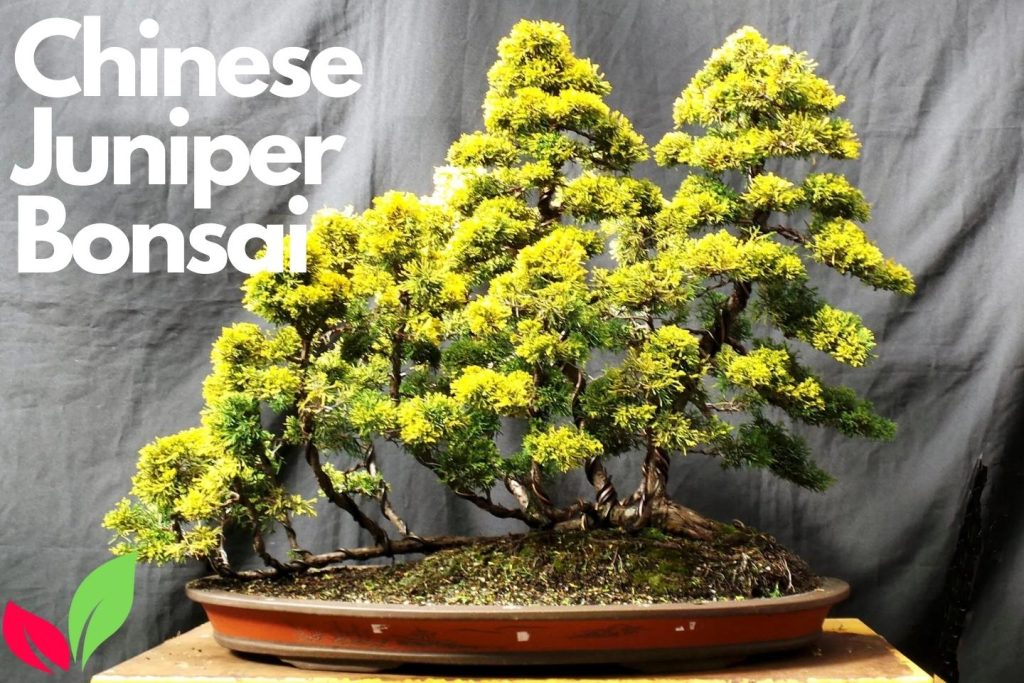
The Chinese Juniper is a popular bonsai choice for its rugged trunk, deadwood features, and needle-like leaves in shades of green. Its twisted branches add character to the bonsai composition. Verities of Chinese Juniper Bonsai:
- ‘Sargentii’: This variety is highly valued for its unique foliage arrangement, which showcases both juvenile and adult needle forms on the same tree. It offers a striking contrast in color and texture, enhancing the visual interest of the bonsai.
- ‘Blaauw’: Blaauw Juniper is known for its compact growth habit and deep green foliage. It has a dense branching structure and is favored for its suitability in creating formal upright, or informal styles.
- ‘Torulosa’: Also known as the Hollywood Juniper, Torulosa exhibits distinctive twisting branches and irregular growth patterns. Its sculptural quality adds a sense of drama and artistic flair to bonsai compositions.
Know About: Organic Vegetable Gardening
Japanese Garden Juniper Bonsai

Japanese Garden Juniper is a low-growing, spreading juniper native to Japan. It has needle-like green leaves and cascading branches, making it a good choice for bonsai. Popular Varieties of Japanese Garden Juniper Bonsai are:
- ‘Nana’: Nana Juniper is a compact and slow-growing variety that is particularly well-suited for bonsai cultivation. It features dense foliage and a prostrate growth habit, making it ideal for cascading or rock planting styles.
- ‘Green Mound’: Green Mound Juniper is characterized by its vibrant green foliage and mounding growth habit. It forms a dense, cushion-like appearance, which is visually appealing in bonsai compositions.
- ‘Variegata’: Variegata Juniper is prized for its variegated foliage, which displays a combination of green and creamy white colors. This variety adds an element of uniqueness and visual interest to bonsai displays.
This bonsai enthusiasts can choose from many species and varieties to create beautiful and unique bonsai trees.
Getting Started with Juniper Bonsai
To choose the right juniper species for bonsai cultivation, consider the tree’s characteristics, such as foliage, trunk, and hardiness. Select a healthy tree from a nursery or garden center. Equip yourself with essential tools and equipment, such as concave cutters, shears, wire, bonsai soil mix, watering can, bonsai turntable, root rake, and root hook. Create an ideal environment for your juniper bonsai with ample sunlight, well-draining soil, and proper humidity levels.
Know About: Garden Plants
Juniper Bonsai Care and Maintenance
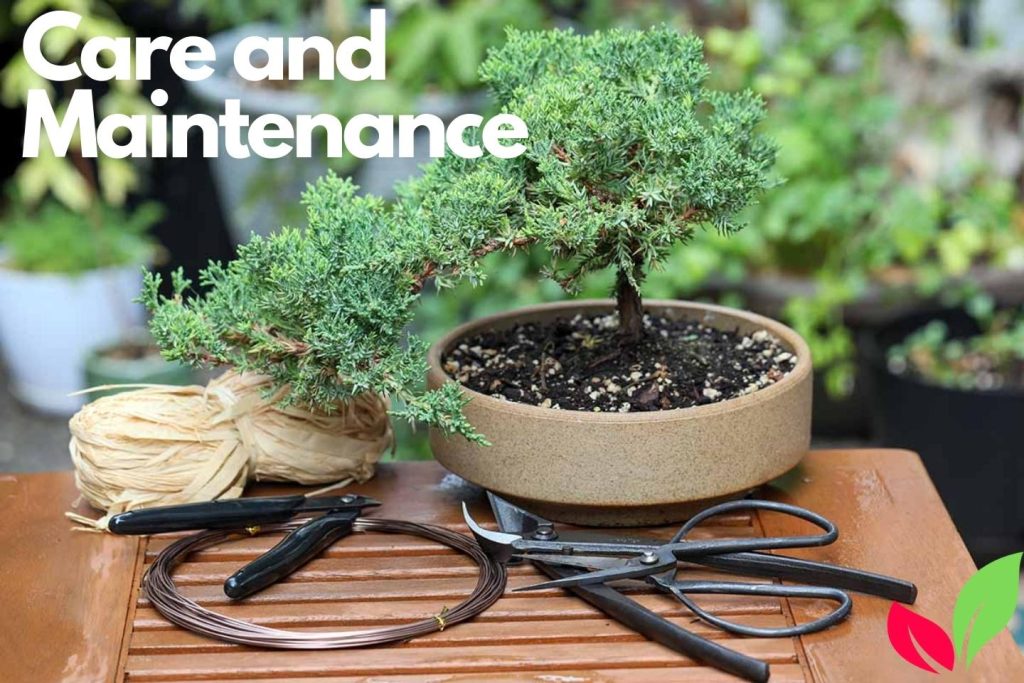
- Water your this bonsai thoroughly when the topsoil feels slightly dry. Avoid watering on a fixed schedule.
- Prune and shape your this bonsai regularly to maintain its size and shape, promote branching, and encourage back budding. Use sharp and clean tools to make precise cuts.
- Wire your Bonsai’s branches with copper or aluminum wire to guide them into desired positions. Remove the wire promptly once the branches have set into place.
- Fertilize this bonsai every two to four weeks during the growing season with a diluted, evenly distributed fertilizer.
- Inspect this bonsai regularly for pests and diseases and take prompt action to address them.
- Implement proper hygiene practices and create a conducive environment for tree health to prevent pests and diseases.
Advanced Techniques for Juniper Bonsai
Repotting is a crucial part of this bonsai care. It promotes root development, prevents root-bound conditions, and ensures a healthy growth cycle. Repotting is typically done every two to three years, depending on the tree’s age, growth rate, and root health. Early spring, just before the growing season, is the ideal time for repotting.
To report a Juniper Bonsai, carefully remove the tree from its container. Gently remove a portion of the old soil to allow for fresh soil and root pruning. Inspect the roots for any abnormalities and trim any long or circling roots. Use sharp and clean tools to minimize stress and potential damage to the tree.
This bonsai grows in well-draining soil mixes that provide adequate aeration and moisture retention. A blend of organic matter, such as Akadama, and inorganic components, like pumice or lava rock, ensures optimal soil structure for root health.
Air layering and grafting are advanced bonsai techniques for propagating and refining Juniper trees. Air layering involves removing bark, applying rooting hormone, and wrapping with moss. Grafting joins a desirable cultivar onto a rootstock. Both require precision, patience, and knowledge.
Jin and Shari are techniques used to create the illusion of age and character in this bonsai. Jin removes bark from branches to imitate deadwood, while Shari removes bark from the trunk to imitate erosion. These techniques add depth, visual interest, and maturity to the tree.

Carving and deadwood techniques provide opportunities for artistic expression and refinement in this bonsai. Carving involves selectively removing or shaping wood to create intricate textures, lifelike features, or natural contours. Deadwood refers to the parts of the tree that have naturally died or been intentionally preserved through techniques such as Jin and Shari. By skillfully incorporating these techniques, bonsai artists can highlight the unique character and story of each Juniper Bonsai, evoking a sense of time, resilience, and aesthetic appeal.
Displaying and Showcasing Juniper Bonsai
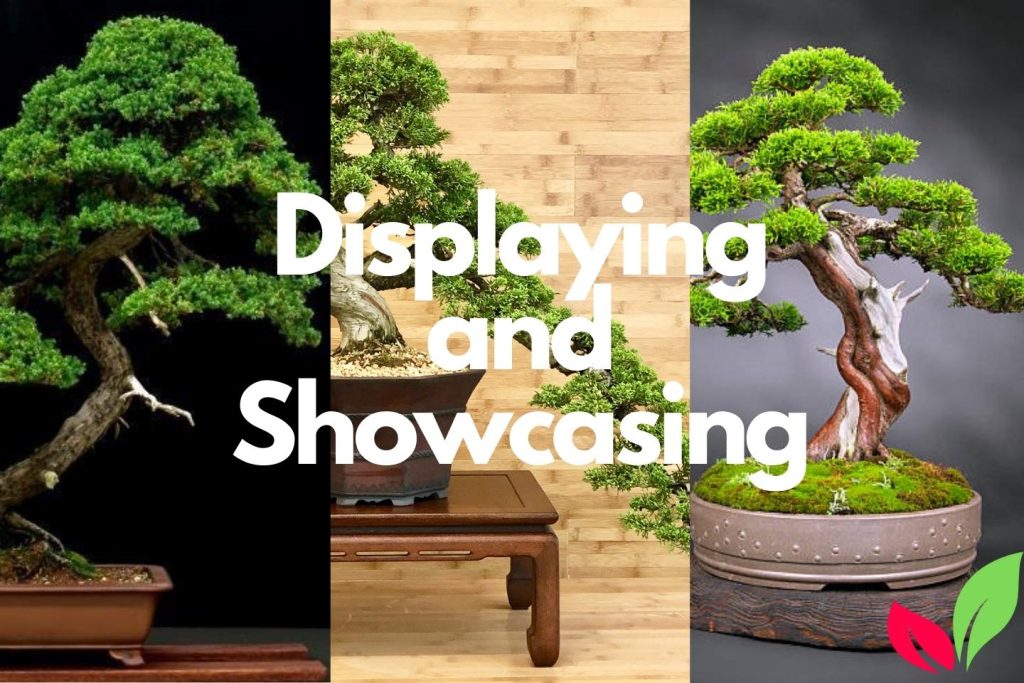
Choosing the Right Bonsai Pot for Your Juniper Bonsai
Choose a pot that complements your Juniper Bonsai’s size, shape, and aesthetics. It should have drainage holes to prevent waterlogged soil. Earthy tones like browns, greens, or unglazed ceramics work well.
Selecting Appropriate Accent Plants and Accessories for Display
To enhance your bonsai display, add accent plants and accessories. Choose companion plants that complement the style and foliage, and use moss, rocks, figurines, or miniature structures to create a scene. Carefully select and arrange the elements for a visually appealing display.
Understanding the Principles of Bonsai Display and Aesthetics
Bonsai display is an art form that involves composition, balance, negative space, and visual harmony. Consider bonsai aesthetics when displaying your bonsai, such as asymmetry, simplicity, and proportion. The tree’s trunk, branches, and foliage should be positioned thoughtfully to create a sense of movement, balance, and visual interest.
Creating Visually Appealing Compositions with Juniper Bonsai
To create a visually appealing Juniper Bonsai composition, consider the tree’s shape, movement, and foliage in relation to the pot, accent plants, and accessories. Strive for balance, perspective, and the use of bonsai design principles.
Participating in Bonsai Exhibitions and Competitions
Bonsai exhibitions and competitions offer opportunities for bonsai enthusiasts to showcase their Juniper Bonsai and engage with the broader bonsai community. Participating in these events allows you to receive feedback from experts, gain inspiration from other artists, and learn from shared experiences. Exhibitions and competitions also provide a platform to celebrate the artistry and dedication behind this bonsai cultivation. Whether you are an experienced artist or a novice enthusiast, taking part in these events can fuel your passion, foster growth, and encourage you to reach new heights in your bonsai journey.
Troubleshooting Common Issues with Juniper Bonsai

Yellowing or Browning Foliage: Causes and Solutions
Yellowing or browning foliage in Juniper Bonsai can be attributed to a variety of factors, including:
- Improper watering
- Nutrient deficiencies
- Pests
- Diseases
- Environmental stress
It is important to identify the specific cause of foliage discoloration in order to implement an effective solution. Some initial steps that can be taken to address the issue include:
- Adjusting the watering regimen
- Providing appropriate fertilization
- Addressing pest or disease infestations
In addition, ensuring that the tree receives adequate sunlight, proper air circulation, and suitable temperature and humidity levels can help to alleviate stress and promote healthy foliage growth.
Overwatering and Root Rot: How to Prevent and Recover
Overwatering can lead to root rot, which can damage the tree. To prevent it, water the tree only when the soil is dry. If root rot has occurred, remove affected roots, apply fungicide, and repot in fresh soil.
Dealing with Pests and Diseases
This bonsai can get pests and diseases like spider mites, aphids, scale insects, and fungal infections. To treat them, use organic insecticidal soaps, horticultural oils, or chemical treatments for pests, and fungicides for fungal infections. Regular inspection, good hygiene practices, and proactive measures can help prevent infestations.
Reviving a Neglected or Unhealthy Bonsai Tree
To revive a neglected Juniper Bonsai tree, assess its health, identify problems, and address them step by step. This may involve repotting, root pruning, watering, fertilizing, and treating pests or diseases. Be patient, as recovery may take time.
Addressing Seasonal Challenges and Weather-Related Issues
This bonsai needs protection from extreme temperatures, frost, strong winds, and excessive humidity. Watering and fertilization should be adjusted seasonally. With care, your Juniper Bonsai will thrive.
Conclusion
Growing a Juniper Bonsai is a satisfying way to interact with nature. It will help to learn about bonsai and appreciate its beauty. The dedication and care invested in nurturing a Juniper Bonsai tree will not only provide one with visual pleasure but also personal growth and a sense of accomplishment. Each twist and turn of its branches, each vibrant green needle, tells a story of resilience and the passage of time. As you begin on this incredible adventure, embrace every moment, learn from the tree, and explore this bonsai’s endless potential.

